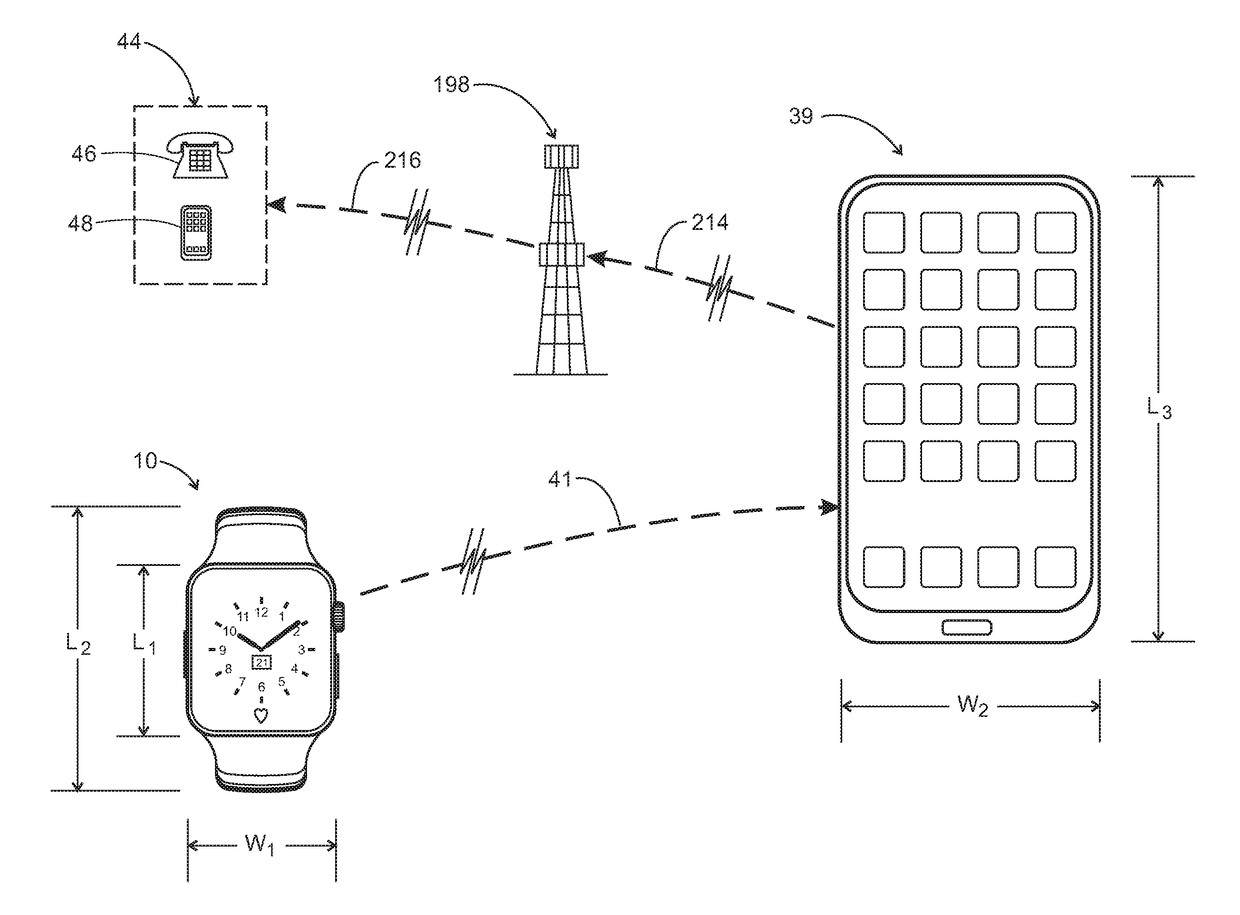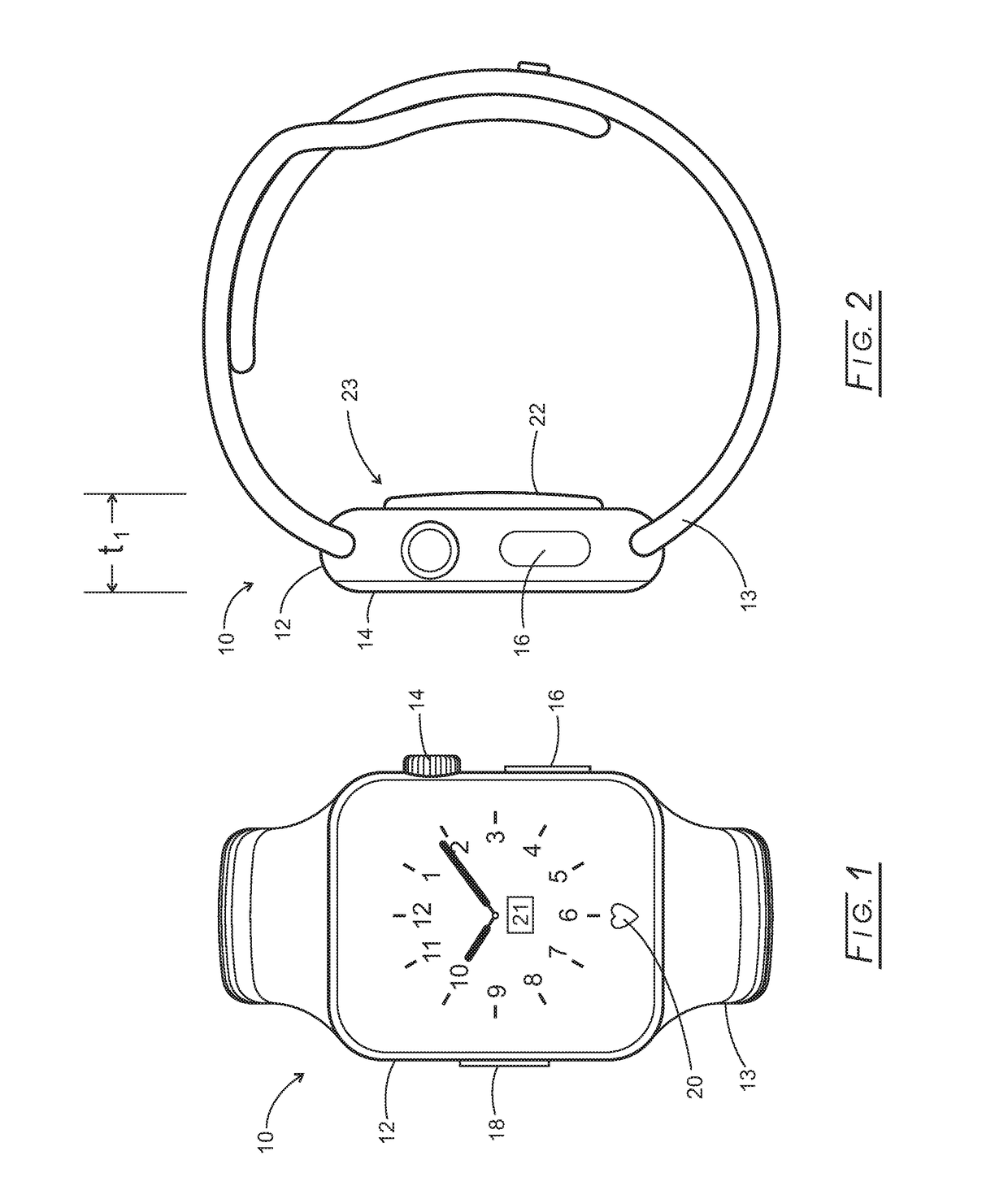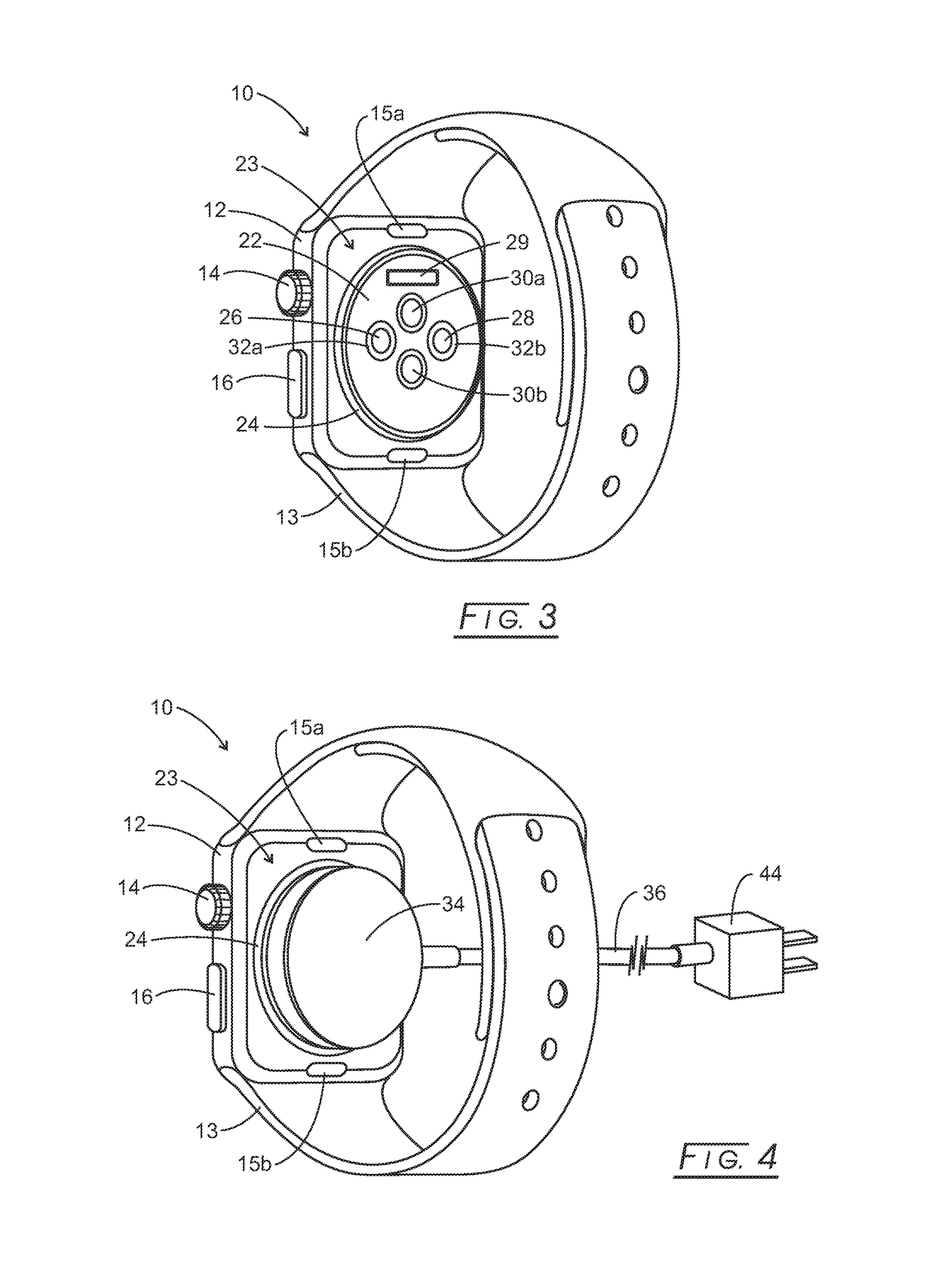Wearable Apparatus, System and Method for Detection of Cardiac Arrest and Alerting Emergency Response
a wearable device and cardiac arrest technology, applied in the field of wearable devices, can solve the problems of the probability of cardiac arrest detection and alerting device, and achieve the effect of minimizing the probability of false indication of cardiac arres
- Summary
- Abstract
- Description
- Claims
- Application Information
AI Technical Summary
Benefits of technology
Problems solved by technology
Method used
Image
Examples
Embodiment Construction
[0057]In the disclosure to follow, initially seen in FIGS. 1 and 2 representing all four embodiments of the present disclosure for the detection and alerting of first responders in the event of a cardiac arrest or imminent cardiac arrest. As seen in the exterior front surface view of a wearable cardiac arrest detection and alerting device, 10, in FIG. 1, wearable cardiac arrest detection and alerting device 10 includes a case, 12, a wrist-band, 13, a clock adjustment stem, 14, an on / off toggle switch for heart rate monitor, 16, a display toggle switch, 18, a heart icon, 20, displayed when heart rate monitoring function is active, and a clock display, 21. As seen in the exterior side view of wearable cardiac arrest detection and alerting device 10 in FIG. 2, a back surface, 23, of wearable cardiac arrest detection and alerting device 10 includes a sensor support member, 22, and sensor, as well as battery charging components (not shown in FIG. 2).
[0058]Still referring to FIGS. 1 and 2...
PUM
 Login to View More
Login to View More Abstract
Description
Claims
Application Information
 Login to View More
Login to View More - R&D
- Intellectual Property
- Life Sciences
- Materials
- Tech Scout
- Unparalleled Data Quality
- Higher Quality Content
- 60% Fewer Hallucinations
Browse by: Latest US Patents, China's latest patents, Technical Efficacy Thesaurus, Application Domain, Technology Topic, Popular Technical Reports.
© 2025 PatSnap. All rights reserved.Legal|Privacy policy|Modern Slavery Act Transparency Statement|Sitemap|About US| Contact US: help@patsnap.com



